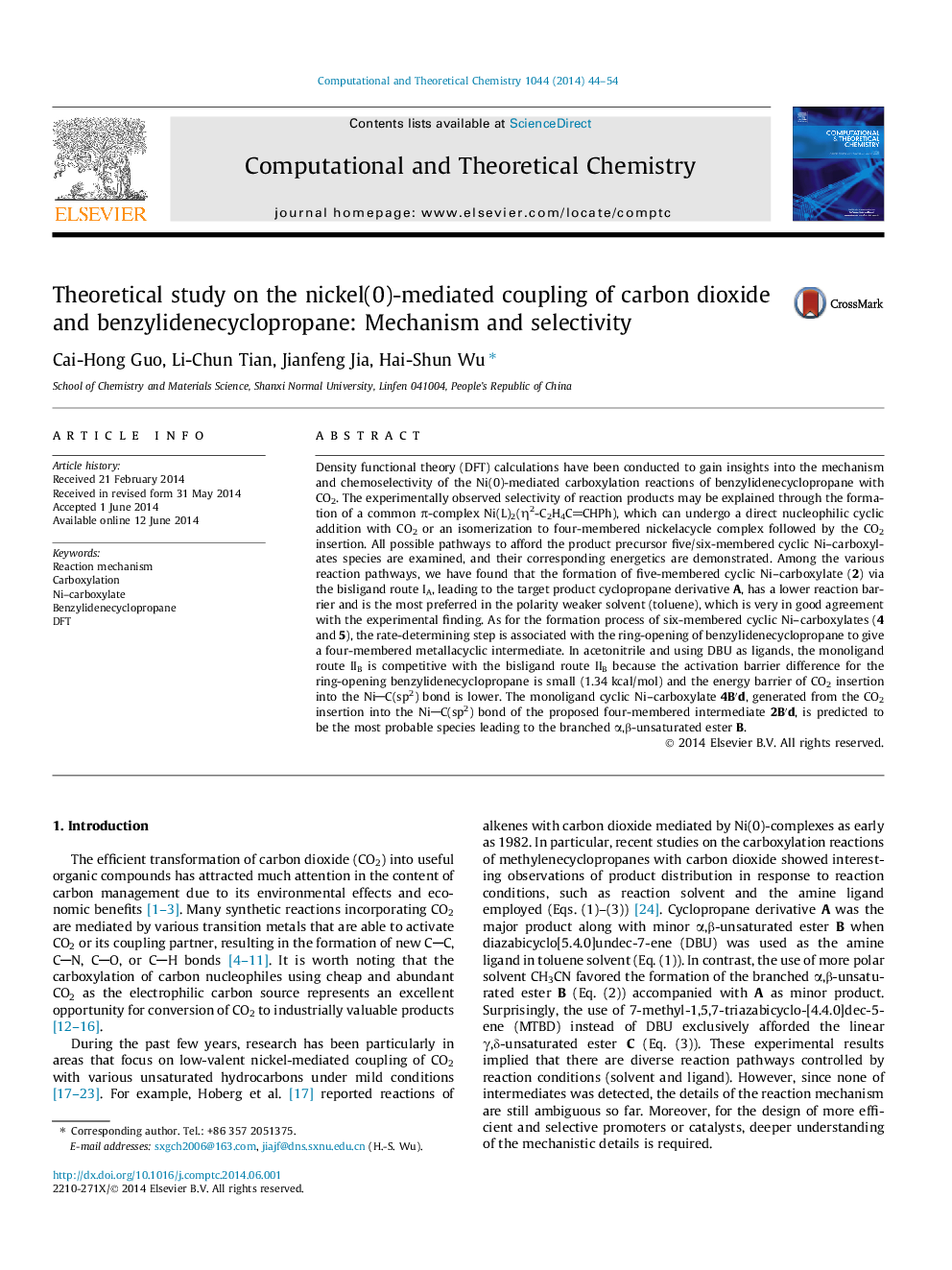| Article ID | Journal | Published Year | Pages | File Type |
|---|---|---|---|---|
| 5393546 | Computational and Theoretical Chemistry | 2014 | 11 Pages |
Abstract
The mechanisms of the Ni(0)-mediated carboxylation of benzylidenecyclopropane with CO2 have been investigated by using DFT/B3LYP calculations. Among the various reaction pathways, the formation of five-membered cyclic Ni-carboxylate (2Aâ²) via the bisligand route, leading to the target product cyclopropane derivative A, was found to occur easily in toluene. Alternatively, in acetonitrile the six-membered cyclic Ni-carboxylate 4Bâ²d is the most probable species leading to the branched α,β-unsaturated ester B.
Keywords
Related Topics
Physical Sciences and Engineering
Chemistry
Physical and Theoretical Chemistry
Authors
Cai-Hong Guo, Li-Chun Tian, Jianfeng Jia, Hai-Shun Wu,
